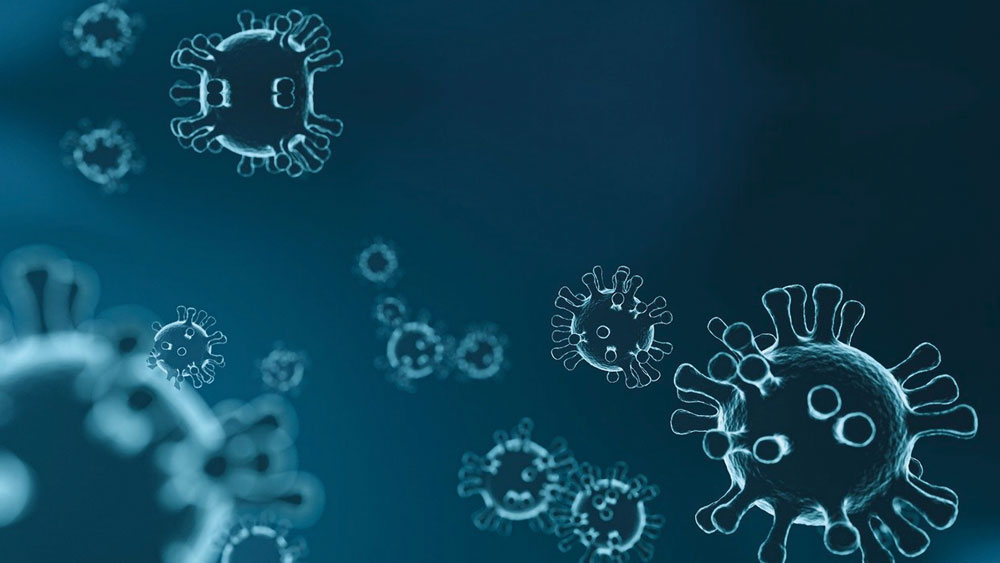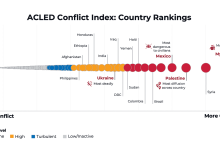Can a Viral Butterfly Force the Hand of Fate?
How can a viral butterfly force the hand of fate? Months after the outbreak of COVID19 and deep into the global pandemic stage, information starts being consolidated, patterns observable and concerns about the next day increasingly worrisome.
In Europe and the United States, the restrictive measures and namely the lockdown of the population, seem to be leading with great accuracy to the largest quarterly decline in economic activity since 1933. What we did as a species has not been tried or done before: locking down billions of humans, asking them not to work, urging them to avoid other humans and all that without guaranteeing the next day or at least a solid plan.
There has been a great public battle regarding how to control the spread but no estimation about when we return to ‘normal’ or what ‘normal’ should look like from now on. Additionally, the constant flow of data is almost inconsistent, out of context or in the worst cases being weaponized for political purposes. We have cases like the one of South Korea which handled the crisis without heavily restrictive measures, we have Greece who handled the crisis with restrictions really early on and we have the curious case of Sweden who pretty much advised its people to respect individual safety guidelines (and seems to be managing very well so far). There are no predominant common underlying denominators between these countries and that is just an indicative example of our incapacity to see connecting patterns and formulate a flowchart for containing the virus. It also produces indivertibly the next big question: “and now what?”
McKinsey & Company estimates that 40% to 50% of discretionary consumer spending will probably not occur. In every recession, people reduce risk, reduce spending and cut back on the non-essential costs that can easily be postponed, increasing precautionary savings while expecting worse news or deterioration. What is new to the situation, and pretty much unprecedent in such a scale, is the fact that people must now avoid people; they must not go out, must not dine out, must not travel, must not move. This is not just an impact for whole pillar industries (like automotive, travel, entertainment etc.) but catastrophic. The above-mentioned estimation of 50% drop in discretionary spending could roughly be transformed into a 10% (or more) reduction in GDP directly; this is without including the aftermath and secondary-domino effects. That’s not only unprecedented in modern history, it has been historically almost unimaginable.
And all that because someone ate a bat in China? That might be a little bit stretched, even for the chaotic Butterfly Effect theory where flying butterflies in Tibet cause hurricanes in Mexico. Or not?
To describe it briefly, the phenomenon ‘assigns’ the power to cause a hurricane in China to a butterfly flapping its wings in New Mexico. It may take a very long time, but there is a real matrix of interwoven (potentially causal) connections between the flap of the wings and its contribution to the hurricane. If the butterfly had not flapped its wings at just the right point in space/time, the hurricane would not have happened. Of course, the butterfly is just an example; could arguably be replaced by a sick bat who got trapped and eaten in Wuhan, causing the financial collapse in wall Street or you not being able to go out and enjoy dinner in your favorite restaurant.
Could it be the hand of fate? Could it be some sort of cosmic force bringing these apocalyptic events upon us? Is it our destiny?
Well, we humbly suggest that it is probably a combination of these factors, along with some others. The cosmic force is real and it is called ‘Evolution’ and yes, it does happen due to- or along with- ‘random’ or ‘divine’ (if you want to go that way) intervention of a simple happening which alters reality and shapes history. But let’s start putting things in line first and try to scratch the surface of how viruses have been shaping, like cosmic butterflies, human history from the very beginning.
Viral humans
Viruses are little more than strings of genetic material, usually in the form of a molecule called RNA, packaged in a protein coat, and they all appear to operate in very similar ways. Once they infected a host cell, it hijacks the cell’s own molecular machinery to copy its genes and copy itself all in all. New viruses are assembled from these freshly manufactured parts, which eventually burst out in search of new cells to attack. It is still debated whether viruses exhibit signs of intelligence and that’s remarkable because they are not considered to be even living organisms. That, of course, has to do with how we define ‘life’ or ‘intelligence’ apparently.
For most viruses, such as the flu, the story ends there – spread, hijack, copy, die. But a handful of retroviruses – including HIV or HPV – are even sneakier, smuggling their way into our DNA. They insert themselves randomly into the genome of an organism, lying low (almost ‘dormant’) for a very long time until “the time is right” to pop up again. The genetic instructions can be ‘read’ from the embedded virus, converted into DNA and then pasted into another location in the genome. Repeat this cycle again and again, and multiple copies of the viral DNA quickly build up. Viruses hijack nearly every function of a host organism’s cells in order to replicate and spread, so it makes sense that they would drive the evolution of the cellular machinery to a greater extent than other evolutionary pressures such as predation or environmental conditions.
Over millions of years, these viral DNA sequences randomly mutate and change, losing their ability to break free from their host cells. Trapped inside the genome, some of these ‘endogenous’ retroviruses can still jump around while others are stuck forever where they last landed. And if any of these events happen in the germ cells that make eggs and sperm, then they will be passed down the generations and eventually become a permanent part of an organism’s genome.
David Enard, Ph.D., a postdoctoral fellow at Stanford University specifies that: “When you have a pandemic or an epidemic at some point in evolution, the population that is targeted by the virus either adapts, or goes extinct. We knew that, but what really surprised us is the strength and clarity of the pattern we found”.
Around half of the human genome is shaped by an immense number of DNA sequences that can be traced back to long-dead viruses or ‘transposable elements’ or ‘transposons’. Some researchers claim and raise this figure up at 80%, as ancient sequences are now degraded beyond the point of being recognizably virus-like, weathered within the genome like fossilized remnants.
Eventually, and as our technological capacity increases, we are able to see patterns more clearly. We are slowly figuring out that as well as being our genetic enemies, some of the viruses embedded in our genome have become our friends or even slaves. Research findings suggest that 30% of all protein adaptations since human divergence from apes have been caused by viruses. Furthermore, it is also suggested that brain cells are prime candidates for reactivating jumping genes, increasing the diversity of nerve cells and enhancing our cognitive capacity.
Previous research on the interactions between viruses and proteins has focused almost exclusively on individual proteins that are directly involved in the immune response – the most logical place you would expect to find adaptations driven by viruses. Proteins perform a vast array of functions that keep our cells ticking. By revealing how small tweaks in protein shape and composition have helped humans and other mammals respond to viruses, the study could help researchers find new therapeutic leads against today’s viral threats.
“The big advancement here is that it’s not only very specialized immune proteins that adapt against viruses,” said Enard. “Pretty much any type of protein that comes into contact with viruses can participate in the adaptation against viruses. It turns out that there is at least as much adaptation outside of the immune response as within it.”
“We’re all interested in how it is that we and other organisms have evolved, and in the pressures that made us what we are,” Dmitri Petrov, Ph.D and part of leading research team on the subject says. “The discovery that this constant battle with viruses has shaped us in every aspect – not just the few proteins that fight infections, but everything – is profound. All organisms have been living with viruses for billions of years; this work shows that those interactions have affected every part of the cell,” he adds.
COVID19’s identity
Coronaviruses or coronavirinae are a large family of RNA viruses that are able to infect both humans and animals; ‘corona’ is derived from the ancient Greek word ‘κωρόνη’, meaning crown. This is apparently an effort to depict the envelope of the virus which is consisted by protein and glycoprotein projections seen by electron microscopy – similar to the image of a crown. This type of virus (named then B814) was firstly identified in humans in the 1960s by Tyrrell and Bynoe, in human embryonic tracheal organ cultures obtained from an adult patient with respiratory symptomatology. It’s a pleomorphic particle, measured 80-150nm, with a lipid double layer outer structure (membrane and envelope) and club-shaped spikes on the surface of it and the single-stranded RNA genome in the interior.
Historically SARS-CoV-1 (beta-coronavirus) was the first severe outbreak of this kind of virus in South China in 2003; after that event, in 2004, HCoV-NL63 (alpha-coronavirus) was identified in Netherlands in a pediatric patient with bronchiolitis. In 2005, HCoV-HKU1 (beta-coronavirus) was the next type discovered in a male patient from Hong-Kong and the last one before the most current pandemic crisis was MERS-CoV (beta-coronavirus) in 2012, firstly isolated from Saudi Arabia patient. All of them, were associated with respiratory symptoms, like common cold, the transmission of the virus in most of the cases was likely to be airborne, via human-to-human or animal (camels, palm civet)-to-human, food transmission being unlikely though.
“Revenons à nos moutons”, COVID-19 or SARS-CoV-2 or Wuhan coronavirus (beta-coronavirus) has left its mark most possibly not only to the current year. It is considered by many that the virus made its first presence at a market near Wuhan (China) located at a 30km distance. Epidemiologists have approximated that the first case was back in November 2019. Its molecular structure is the same to all strains of coronavirinae. The transmission is possible through human-to-human interaction and via respiratory microdroplets (cough, sneeze, talk, direct/indirect contact), which explains the protection measurements taken with masks (N95/FFP2/FFP3), social distancing (more than 2m) and frequently hand washing with soap and alcohol-based solutions (ethanol 80% formula, 2-propanol 75% formula).
Mean incubation period is about 2-7 days, but cases with an incubation period of 27 days have been presented, explained by intrinsic properties of the virus being undetectable by the immune system at the early stages. The principal problem of the extremely high rate of transmission, is due to the spreading from asymptomatic humans. Studies made regarding spike proteins, demonstrated the usage of ACE2 (angiotensin converting enzyme 2) as cellular entry, neutralizing the antiviral effect of interferon leading to an excess of inflammation and continuous viral replication considering early stages. Asymptomatic and mild symptomatic patients sum up the majority (70%-80%) of the cases, presenting fatigue, dry cough, sore throat, fever, shortness of breath and less often diarrhea. Susceptibility of severe infection, is increased to those with subsequent pulmonary and cardiovascular disease, diabetes and obesity.
Various types of medications have been presented, regarding treatment modalities for the running disease, depending on the severity of the disease: lopinavir/ritonavir, oseltamivir, hydroxychloroquine, methylprednisolone, remdesivir, favipiravir, tocilizumab which until now used to have utility in other pathologies like HIV, juvenile rheumatoid arthritis, lupus erythematosus and other viral infections (Ebola virus, Influenzae virus) with a positive outcome in many of the COVID-19 cases.
The principal treatment for severe COVID-19 patients is symptomatic, meaning oxygen therapy and mechanical ventilation. Many pharmaceutical companies are trying to develop the prophylactic vaccines since the first days of the outbreak, by analyzing target antigens (ex. recombinant protein, mRNA, DNA), immune system paths, suitable and safe vectors (viral vector vaccine- S protein) and satisfactory antibody response preventing immediate reinfection.
Global response and societal shifts
The pandemic is moving like a wave and we can either ride it or get crashed under it. There is no way to stop it. It is a formidable natural force and not a new one as mentioned above. COVID19 is beginning to be much more than just a health crisis. By invading every one of the countries it reaches it is leveling social, economic and political structures and this will leave potentially irreparable scars of war in our way of life.
We are deep into uncharted waters; they are murky and dangerous too. Many of our communities are now beyond recognition; empty streets, closed shops and weird looks in the super markets towards anyone who dares to cough. Dozens of the world’s greatest cities are deserted as people stay indoors, either by choice or by government order. Every day, people are losing jobs and income, with no way of knowing when normality will return. Small island nations, heavily dependent on tourism, have empty hotels and deserted beaches. The International Labor Organization estimates that 195 million jobs could be lost. UNDP Administrator, Achim Steiner commented that “we are already hard at work, together with our UN family and other partners, on three immediate priorities: supporting the health response including the procurement and supply of essential health products, under WHO’s leadership, strengthening crisis management and response, and addressing critical social and economic impacts.”
The IMF has already set up a webpage mapping the governmental responses to COVID19 globally, country by country, from Afghanistan to Vanuatu and Zimbabwe. They also have the disclaimer: “The information included is not meant for comparison across members as responses vary depending on the nature of the shock and country-specific circumstances.”
But how is it possible not to compare?
We have cases of leaders that acted preemptively and with great anticipation and cases like the one of Boris Johnson who underestimated COVID19 and its impact, ending in the ICU (intensive care unit) himself, after contracting it. We have cases of states with extreme lockdowns and others without. We have cases of totalitarian regimes succeeding and democratic ones failing and vice versa. We also have cases of weaponization of COVID19, like the one of Turkey, which seems to be selectively pushing the infected refugees into Greece as a means to obtain political and strategic gains for its expansive regional foreign policy. We also have the United States and president Trump accusing the World Health Organization for mismanagement and stating they will cut the funding down. They also considered deployment of military forces at the joint borders with Canada (!) to “help fight the spread of coronavirus”. Russia seems to be eerily quiet and China is trying to recover; the curious case of China, and a very good paradigm, is that the citizens are now allowed to go out, dine out and do activities but they are not willing to. It seems that COVID19 is shaping us behaviorally.
At the same time India is crumbling, failing to contain the virus, failing to monitor it and even worst failing to support its confined population; sources onsite claim that people will “start dying from hunger before the virus gets them”. Millions of unregistered workers cannot go out and earn their day’s food, highlighting a stark societal reality. It is also reported by local sources that if someone “coughs or exhibit any signs of illness (any illness) is being thrown out of common living spaces, to survive on their own, in fear of transmitting the virus”; little they know that the virus – if it was ever present – would have already spread by the time the initial host exhibited any observable symptoms.
Meanwhile, and just to highlight the strange times we live in, PwC reports that IPOs (initial public offerings for companies who enter the public markets) Q1 IPOs raised 35.7 Billion Dollars from 207 transactions, an increase of 78% compared with last year’s Q1, amidst the global crisis.
It is becoming evident that without a change of global narrative, combined with the discovery and massive administration of vaccines, these changes are here to stay. Maybe they are spasmodic reactions to a newly found situation or an evolutionary step – or both; only time and history will reveal it.
Recovery scenarios
Early on in the article we reached the question of “now what”?
One if the predominant patterns observable right now (mostly South East Asia and Europe) is countries being at a stalemate with the virus; they have managed to monitor it, control it and flatten the curve. They are not absolutely sure what happens next though; how to relaunch their economies but first and foremost their societies upon which the economies are shaped.
Global consulting firms are already working on different scenarios to approach the roll out. Regions with significant ongoing transmission rates should expect that restarting economic activity will only lead to more infections. Case numbers and, more importantly, hospitalizations need to be low enough for a health system to manage individually rather than through mass measures. An apparent important factor is the level of the local/national health system and its capacity to support the infected population.
Some strategic sectors of the economy will need to operate even in lockdowns like healthcare, security, and procurement of essential goods and services such as food, medicine, energy and communications. Others could open later, once risk has been mitigated, through strict protocols that have been created to account for the activity’s higher risk factor.
When sectors start operating again, leaders must establish and enforce health and behavioral protocols to lower the potential for further transmission. In almost every sector, businesses will need strict protocols for physical distancing: remote work, hygiene- and health-oriented guidelines, frequent monitoring of people’s temperatures, immediate reporting of relevant information to the health authorities, and other measures to guarantee compliance. The future starts to seem weird. Technology will definitely play a very important factor in reinforcing these protocols and measures.
Of course, it is still very possible that we will be eventually not effective in containing the virus, or in mitigating the economic impact. In this case, economic outcomes in 2020 and beyond would be of apocalyptic magnitude. In a more pessimistic scenario, China will not recover fast enough (as it is already showing) and would perhaps will need to lockdown again parts of its territory, maybe due to new outbreaks. It would also be hurt by falling exports to the rest of the world (which is also already happening).
Additionally, the United States and Europe could also fail to contain the virus within one quarter and be forced to implement some form of physical distancing and quarantines throughout the summer (which seems totally realistic now, especially for the US). McKinsey estimates that his could end up producing a reduction of GDP at an annualized pace of up to 40% in Q2. Economic policy would fail to prevent a huge spike in unemployment and business closures, creating a far slower recovery even after the virus is contained.
Conclusion
Bill Gates has been talking about his for a long time; he ‘predicted’ that this next viral outbreak would happen sooner or later. Probably not because he is part of an elite conspiracy cult, aiming at causing dyslexia to our children through their vaccines; it was most probably because he saw the ever-repeating viral outbreaks. He said it was only a matter of time before the next one; and here it is.
Viruses, there immensely small strings of RNA, have been with us since the dawn of time; admittedly, it was not even an exclusive relationship – viruses have been around since the dawn of life probably, infecting anything living. By infecting any life form, it pushed it through evolutionary boundaries forcing it to evolve or perish. That is a cornerstone of what is called natural selection: evolve or go extinct.
Winter has come and we are being called upon to evolve as a species; and we will. It was always our ‘fate’ to evolve and survive until we cannot anymore. Maybe the flap of a butterfly’s (or bat’s) wings in Wuhan can force the hand of fate after all.
Haris M. Rigas MD contributed to the article with COVID’s identity







